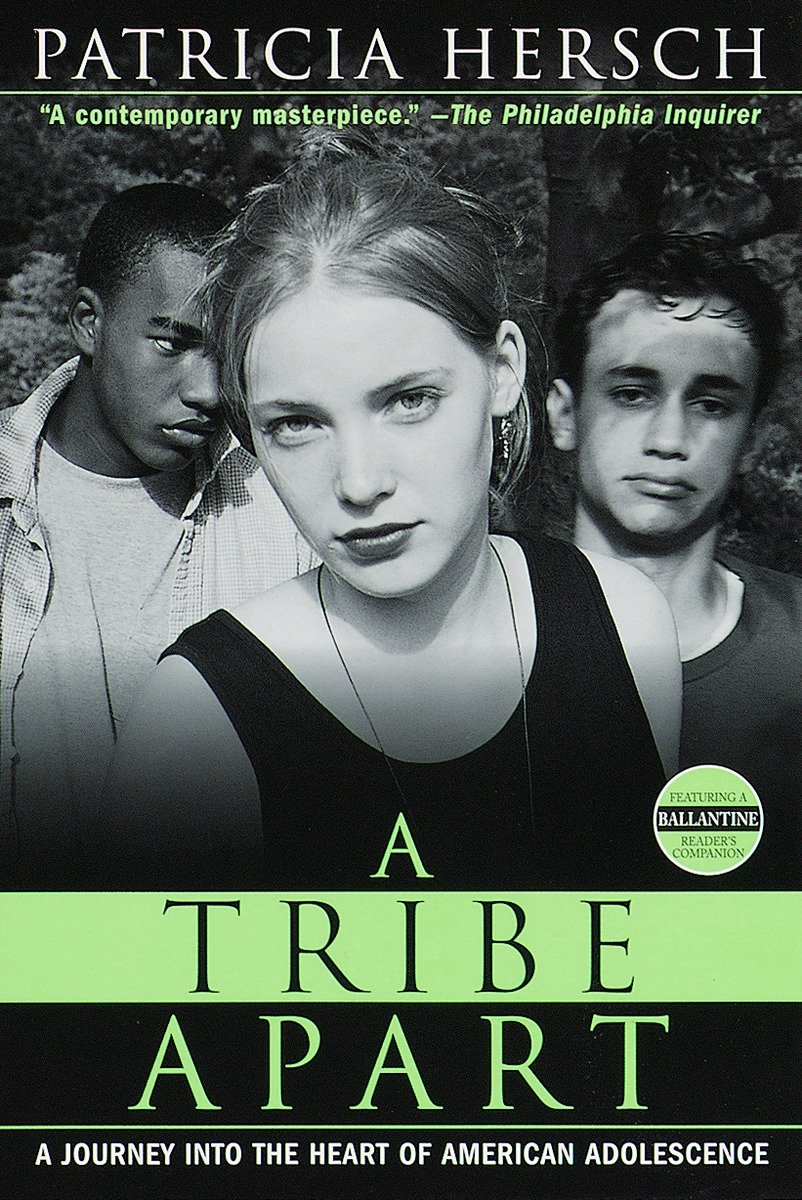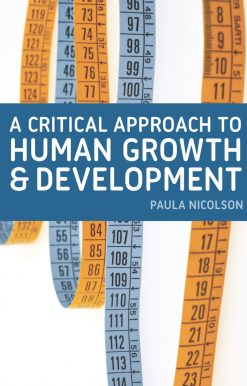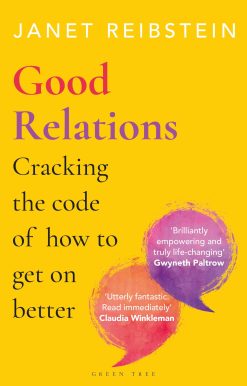A Tribe Apart: A Journey into the Heart of American Adolescence
14.00 JOD
Please allow 2 – 5 weeks for delivery of this item
Description
For three fascinating, disturbing years, writer Patricia Hersch journeyed inside a world that is as familiar as our own children and yet as alien as some exotic culture–the world of adolescence. As a silent, attentive partner, she followed eight teenagers in the typically American town of Reston, Virginia, listening to their stories, observing their rituals, watching them fulfill their dreams and enact their tragedies. What she found was that America’s teens have fashioned a fully defined culture that adults neither see nor imagine–a culture of unprecedented freedom and baffling complexity, a culture with rules but no structure, values but no clear morality, codes but no consistency.Is it society itself that has created this separate teen community? Resigned to the attitude that adolescents simply live in “a tribe apart,” adults have pulled away, relinquishing responsibility and supervision, allowing the unhealthy behaviors of teens to flourish. Ultimately, this rift between adults and teenagers robs both generations of meaningful connections. For everyone’s world is made richer and more challenging by having adolescents in it.
Additional information
| Weight | 0.39 kg |
|---|---|
| Dimensions | 2.34 × 13.97 × 20.83 cm |
| PubliCanadation City/Country | USA |
| by | |
| Format | Paperback |
| Language | |
| Pages | 416 |
| Publisher | |
| Year Published | 1999-8-3 |
| Imprint | |
| ISBN 10 | 034543594X |
| About The Author | Patricia Hersch is a journalist and the author of A Tribe Apart. She was a former contributing editor to Psychology Today and the editor for the United Nations' "Women in Development" newsletter, and also appeared in many publications such as The Washington Post, The Baltimore Sun, and New Age Journal. |
"A contemporary masterpiece."–The Philadelphia Inquirer"[A] BREAKTHROUGH PORTRAIT OF ADOLESCENT CULTURE . . . It is here–not in the pages of dry psychology books–where parents and educators will find the secret, painful truths hidden by modern-day adolescents."–Boston Herald"SPLENDID AND POWERFUL . . . [Hersch] doesn't preach and doesn't sugar-coat. But boy, does she shake us awake."–Chicago Sun-Times"AN INSIGHTFUL, MOVING AND STRIKINGLY HONEST LOOK AT TODAY'S ADOLESCENTS . . . Hersch has allowed the teenagers themselves to tell their stories. . . . While A Tribe Apart should be required reading for all parents and educators, it is also a must-read for anyone who desires a greater understanding of a generation standing on the brink of adulthood."–San Diego Union-Tribune |
|
| Excerpt From Book | In a cozy rambler set on a heavily treed lot on a quiet cul de sac, an alarm clock rings and eleven-year-old Chris Hughes rolls out of bed almost fully dressed. It is a trick he came up with the year before to save time. He showers at night and puts on his shirt and underwear for the next day. If it were cold, he'd put his pants on too. The hardest part is keeping his head straight on the pillow when he lies down so that his hair won't dry weirdly. If it does, he has to wet it under the faucet in the morning. His father thinks this is hilarious and teases him when he comes in to kiss him good night. In fact, his father gives him a hard time about his crew cut. But Chris has grown up hating his naturally curly hair. As soon as he had a choice, he'd had those curls shorn and now he watches for the little turning over of the ends that means it is time for a new buzz cut. Chris is a no-nonsense young man. He does his homework right after he comes home from school. He makes sure his mom or dad signs any forms from school immediately. He packs his backpack at night and lays it on the floor by his bed. In the morning, his mom always has the same lunch, packed in a brown paper bag, waiting on the kitchen table: smooth peanut butter and grape jelly on wheat bread, a boxed drink, a small bag of raisins, and dessert. He likes things that way. Dependable. Seven-thirty, right on the button, he walks through the kitchen door wearing his favorite short-sleeved Buffalo Bills T-shirt (which, in the style of the season, hangs down to his knees), gray sweatpants, white Reebok pump basketball shoes worn permanently untied (although, unlike many kids, he actually leaves the laces in them) over scrunched white tube socks. Short-sleeved shirts worn year-round are de rigueur for a fashionable sixth-grade boy, and Chris has a collection reflecting all the major sports. He stops to pet the dogs now jumping up and down to get his attention, and absentmindedly hugs his mom good morning. She's in her usual seat with her customary cup of coffee. Most days he likes this private time with his mom after his brother Jim has left for high school. It is a comforting routine even when they hardly talk. But not today. He'd like to tell his mom he isn't hungry, but then he'd have to hear the breakfast-is-the-most-important-meal-of-the-day lecture. So he rummages through the cereal cabinet and spreads the thinnest possible layer of Crispy Wheats and Raisins in the bottom of his bowl, splashes in some milk, pours himself a glass of orange juice, and sits down at the table hardly paying any attention to his favorite morning rituals: watching G.I. Joe cartoons and reading the sports section of The Washington Post. His blue eyes stare into space as he pushes his cereal around. He thinks he has a stomachache, he tells his mom. She knows what this is about: today his sixth-grade class is visiting Langston Hughes Middle School. It's just a visit, he tells himself. It isn't like he is going to stay there. But who's he kidding? The Real Thing–seventh grade–will happen soon enough. He just realized the other day that he's spent his whole life at Forest Edge Elementary. He could walk around it in his sleep he'd been there so long. The teachers are nice, and recess is always fun. It is the best being in sixth grade. You have all the power. He can look at the little kids and realize how grown-up he's become. Chris, a "school patrol" since fourth grade, is now a "bus patrol," which is "the coolest because you can sort of arrest people" if they don't follow the rules. In fact, with his friends Brad, Tony, Jeff, Gene, and a few others all volunteering for this position, there are almost as many enforcement officials on Chris's bus as riders. He has a great bunch of friends, most of whom he's known forever. Even if they aren't in each other's classes each year, they always get together at lunch and on the playground. They are wildly competitive in the classroom and on the playing field, all striving for excellence. They have challenged each other in soccer, football, and basketball since they were little boys. They try to write longer stories than each other, get more As, win more awards, but all in good humor. They've competed on Atari, Nintendo, and now Sega Genesis. T hat's how long they've been friends. Chris looks forward to meeting new people–but what if he gets into classes without any of his old buddies? The panic is rising. He has been told tales of Sevey-Bip Day, a one-day free-for-all in which the eighth graders hit the seventh graders at will in a sort of middle school initiation rite. Seventh graders he knows this year have already been giving ominous warnings. His mom tries to reassure him that the event will be forbidden by the school administration. But parents don't know what happens in the school. The kids do it, he has heard, when teachers are not looking. His teachers keep making a big deal about how his class is the first to have "middle school" within the elementary school. The sixth graders have been moved to an isolated corner of Forest Edge so that they feel a bit separate from the younger kids. It's set up in three homerooms, and the classes move among the teachers for science, social studies, math, and language arts. Volunteers have come into the school to allow the students brief forays into electives like photography, computers, and creative writing, although this part fizzled when not enough volunteers could be found. Forest Edge, like schools everywhere, has found that the always dependable stream of volunteers has slowed to a trickle as most parents work, and other demands take precedence. Chris doesn't know it, but his class represents the leading edge of a nationwide movement to restructure the education of early adolescents, which was first outlined in Turning Points, the study by the Carnegie Council for Adolescent Development. The idea is that a team of teachers, teaching their specific subjects, will have shared responsibility for a group of youngsters, and that this will allow ongoing communication among the teachers, collaborative teaching projects, and a community feeling that has been missing in anonymous junior high schools. "Junior high" is out and "middle school" is in, in recognition that early adolescence is a particularly vulnerable time for developing at-risk behaviors, and that youngsters need greater support and nurturing than junior high schools traditionally have given them. Chris's class was one of the first in Fairfax County to institute the change that will combine sixth through eighth grades in separate middle schools over a period of several years. The principal of Forest Edge, Frank Bensinger, is impressed. "We found that with the middle school model, discipline went down a ton," he says. "It made an incredible difference because in sixth grade, kids' eyes are beginning to open up. They are beginning to look at that movement out of the neighborhood as a grown-up thing. There was an elevation of self-esteem–`We are not being looked at as little kids'–and the school was recognizing that. The adults knew they were only changing classes in a tiny little sixth-grade area, but that little piece made the kids feel bigger. We decided to let them all go to lunch at the same time and you would have thought we set them free!" Yeah, yeah, yeah, thinks Chris. He'd heard the middle school spiel. It was definitely cool at Forest Edge. But who are they kidding? Next year is Big Time. At 8:15, Chris leaves his house to wait for the bus. It is so dumb to have to ride to school when he lives less than a quarter mile away. In fact, for most of his years at Forest Edge he walked. Reston, designed with pedestrians in mind, links each elementary school to the surrounding neighborhood by a labyrinth of paths and underpasses that keep walkers off the main intersections. On the way to Forest Edge, Chris used to stroll along a small creek and through a wooded area adjacent to the school. A kid could daydream on such walks, crunch leaves in the fall, stomp footprints in the snow, watch bugs. If your best friend lived nearby, you could share morning secrets. Often big brothers and sisters were seen with younger siblings in tow. Now only those across the street from the school walk daily, and for the rest, the battalion of county school buses, the vans from child care centers, and a growing fleet of parents' minivans safely deliver the children of Reston to their respective schools. This is one of the subtle changes eroding this family-oriented community. The buses for elementary school kids living less than one mile from the school had been added because of some "incidents"–nothing horrible, but definitely frightening for young children intimidated by older kids out earlier from the middle and high schools, or by strangers on paths in the mornings. The official explanation was that it was just as easy for buses traveling back to school to pick up more kids. When his brothers were little, Chris's mom and dad thought nothing about their walking to school alone. Not only did it give the boys a great feeling of being on their own, but it also harkened back to the parents' memories of growing up–the walk to school, the bike ride to the candy store, an afternoon movie alone with friends. In those times, there was a cadence to the process of growing up, a socially agreed-upon sequence of age-appropriate behaviors that have now been replaced by a developmental free-for-all with great unsupervised leaps of freedom counterpoised with tight new restraints. |
Only logged in customers who have purchased this product may leave a review.






Reviews
There are no reviews yet.